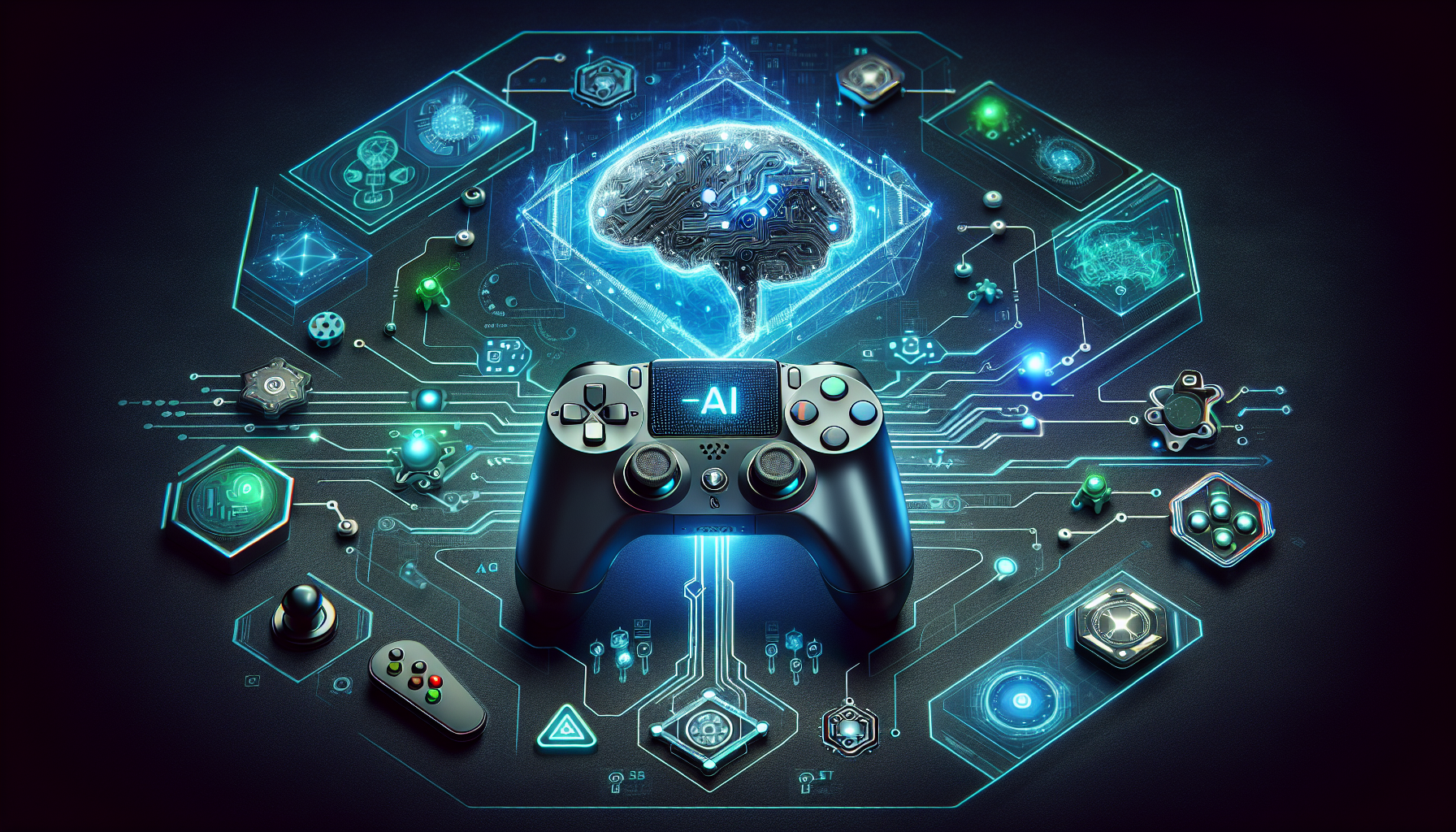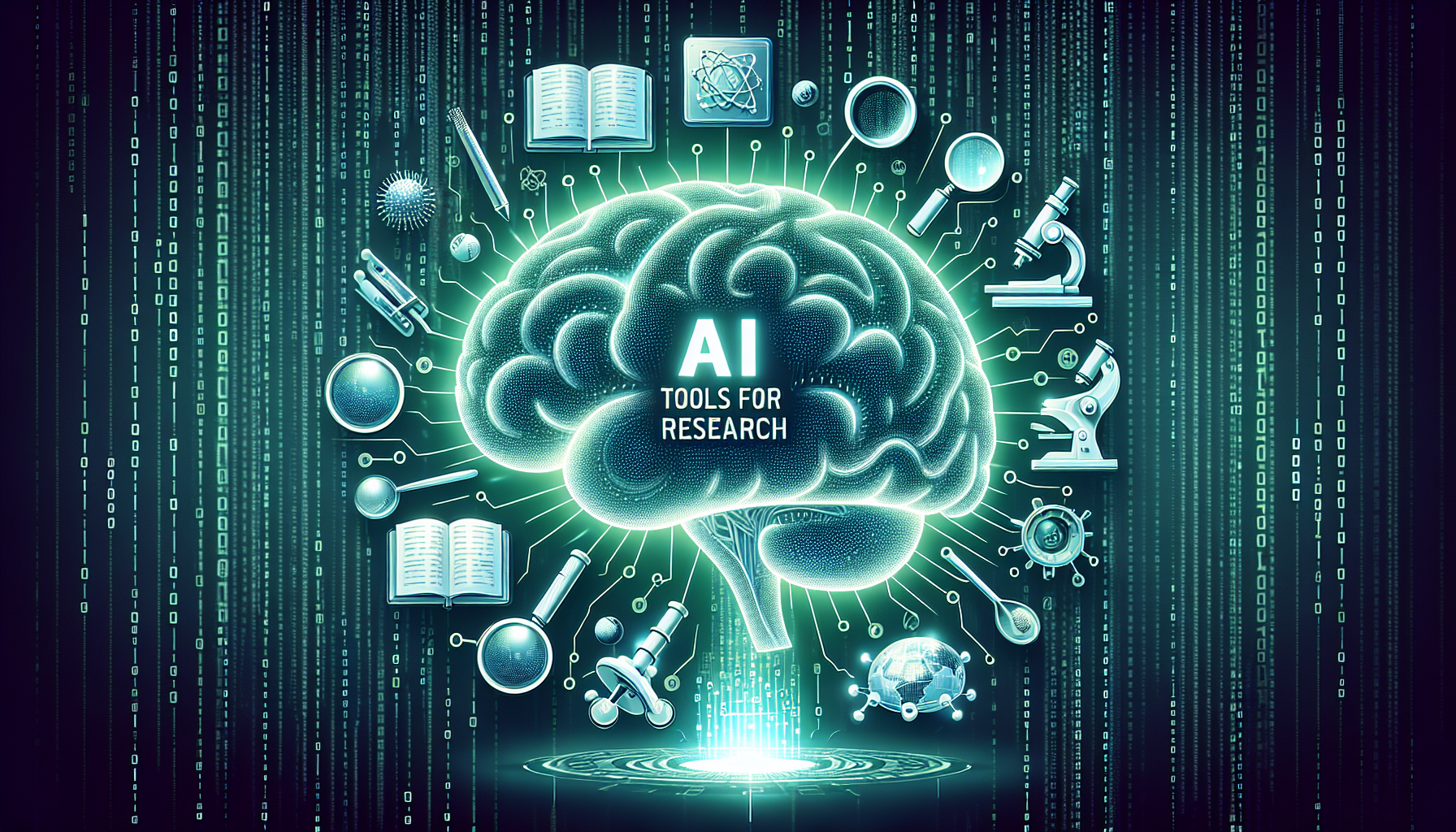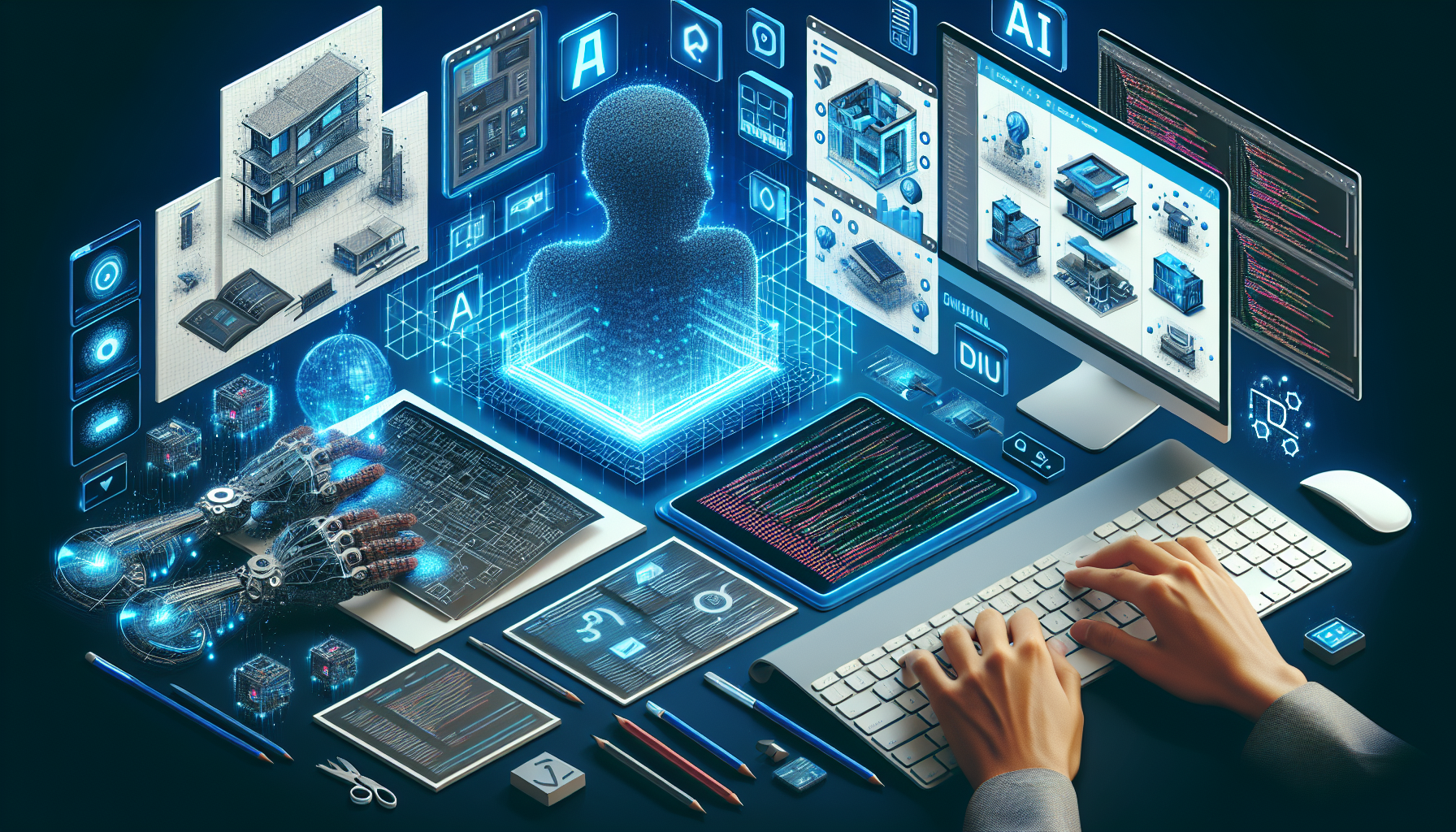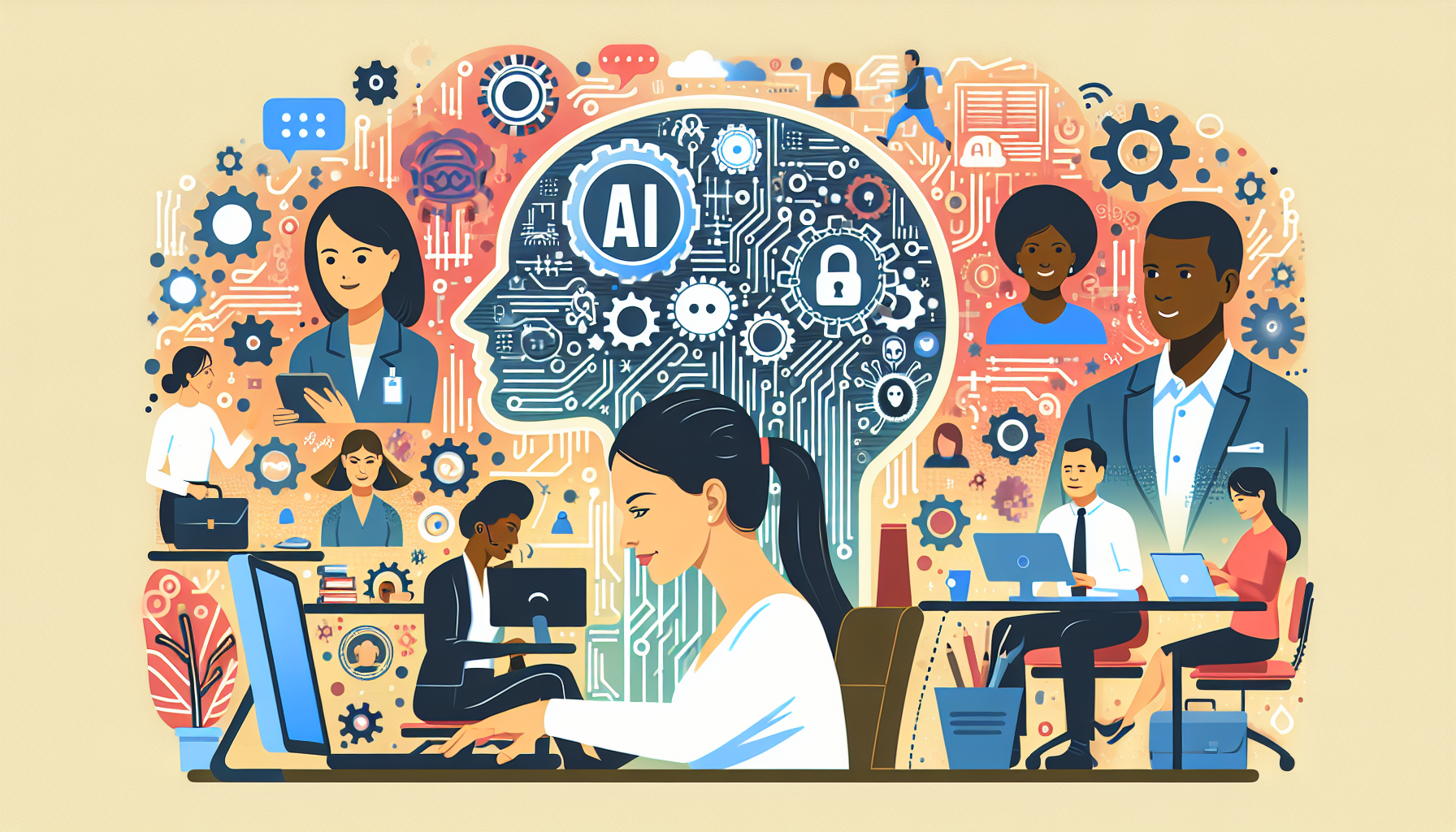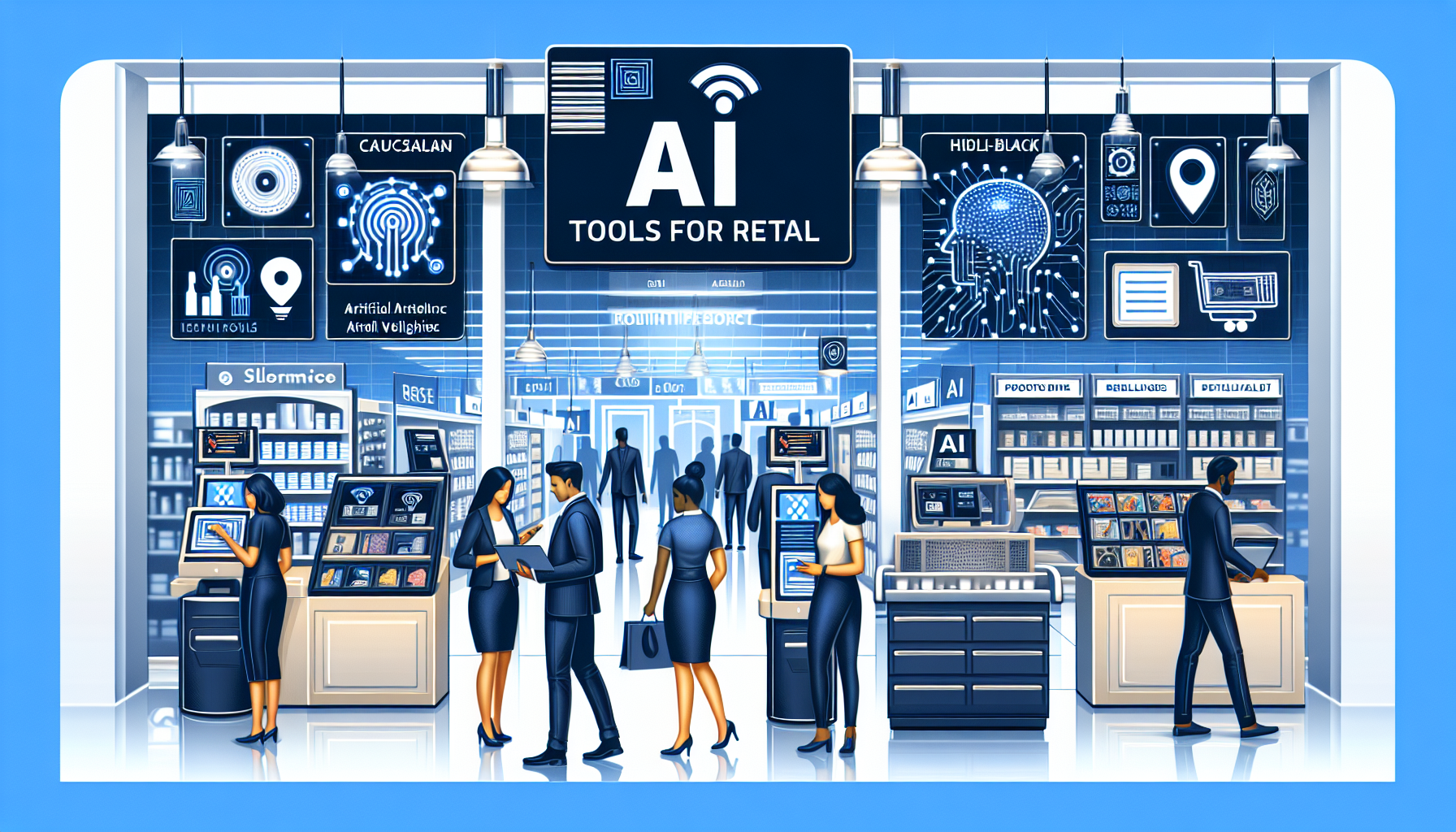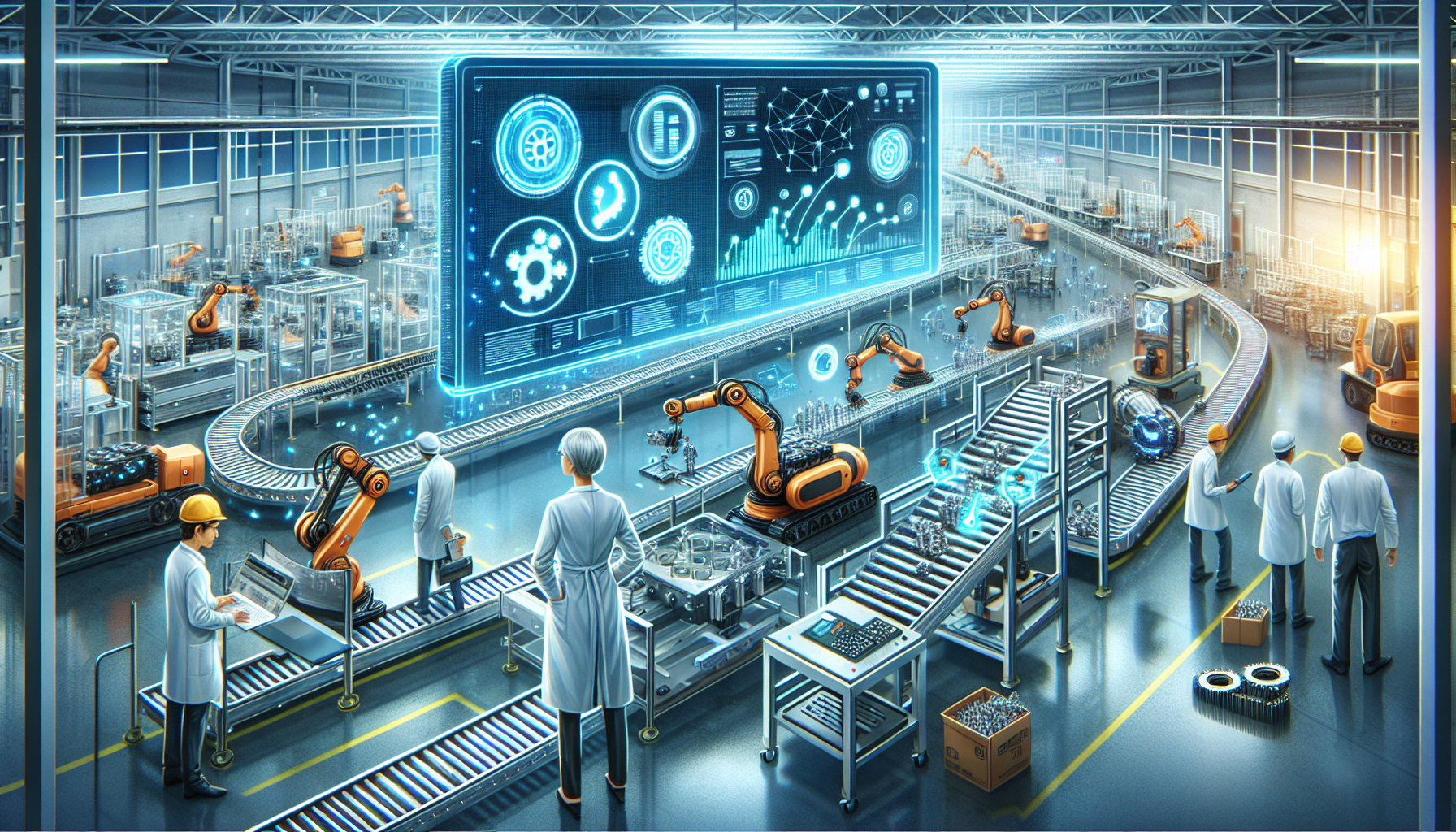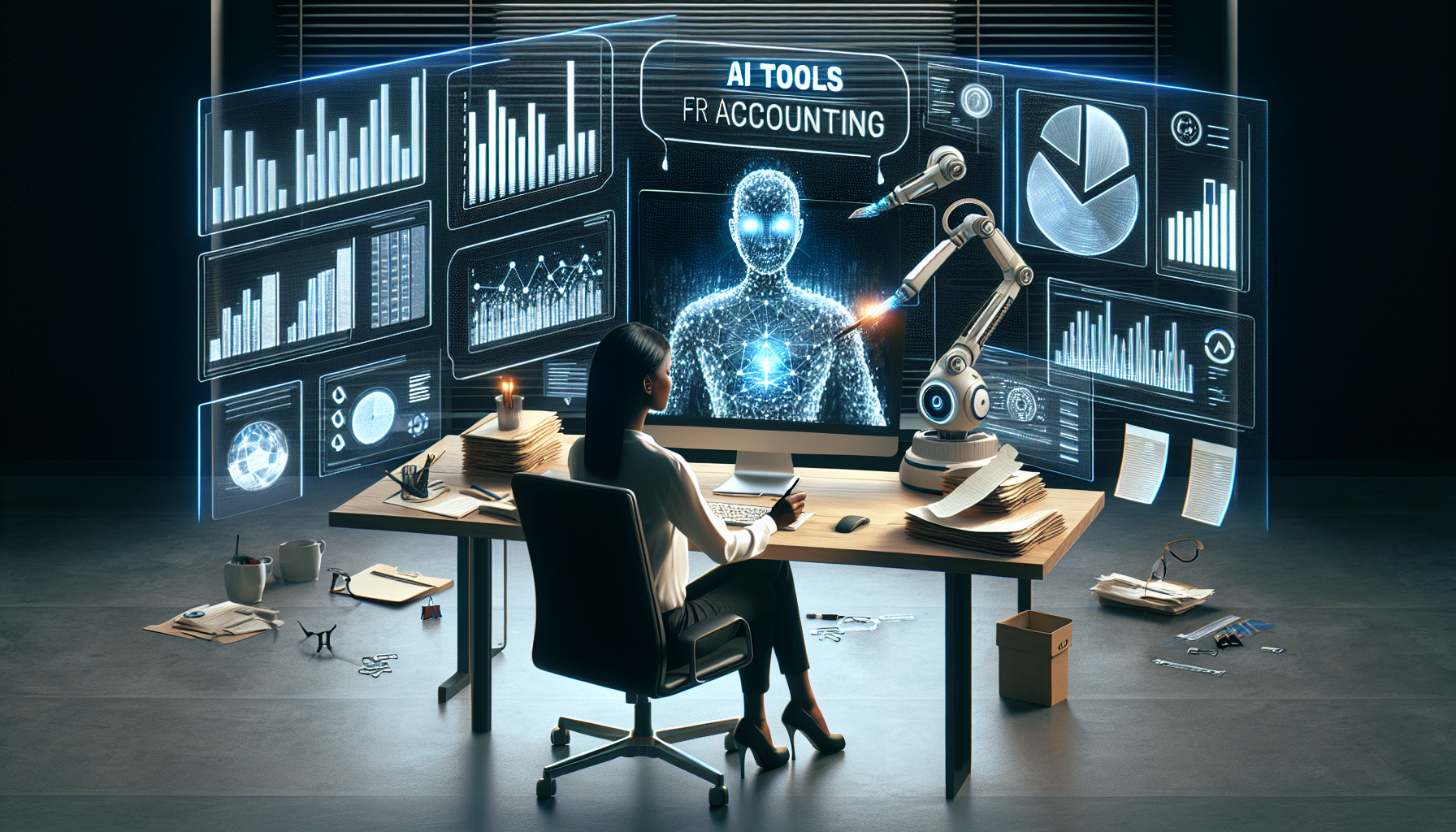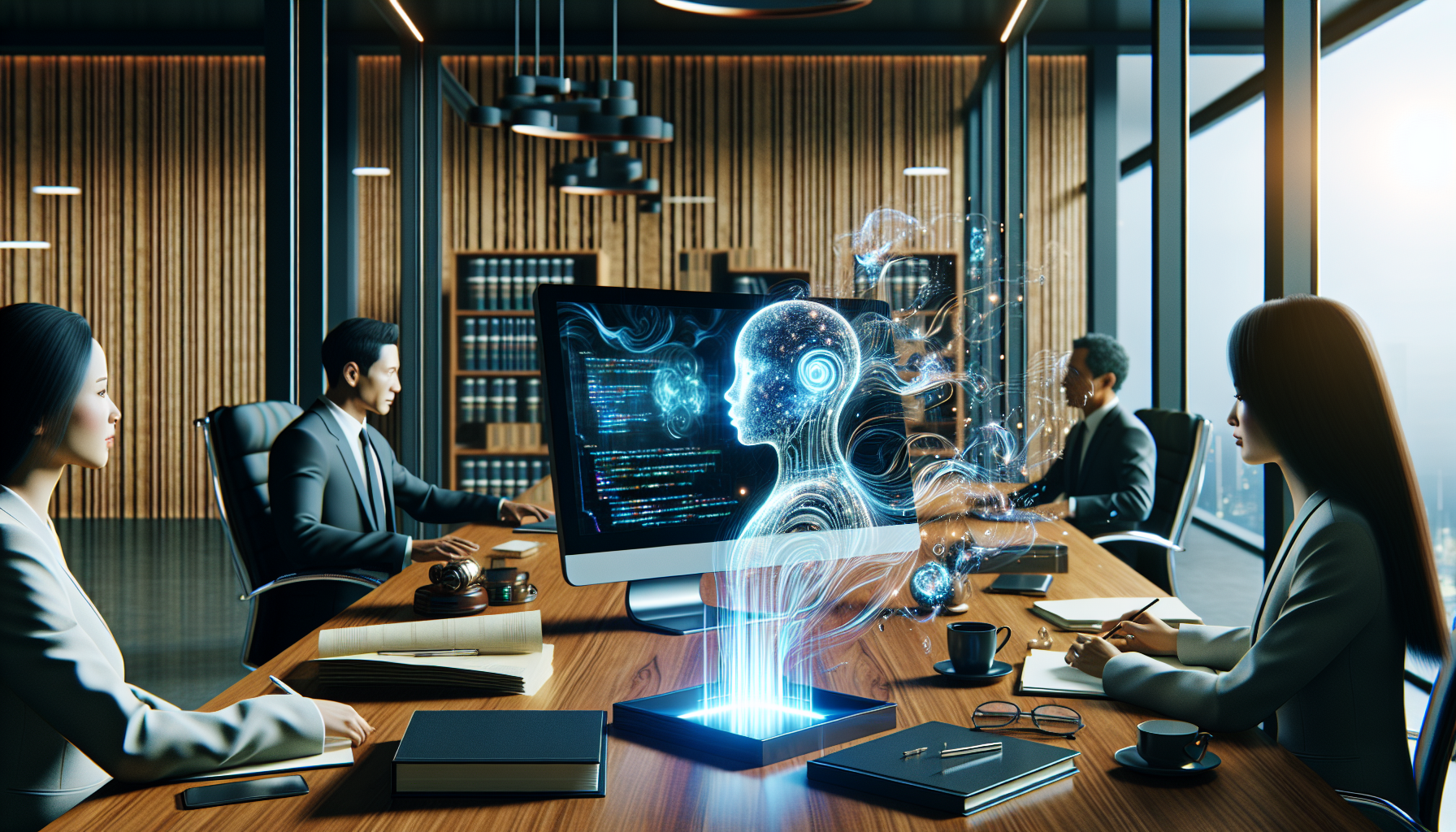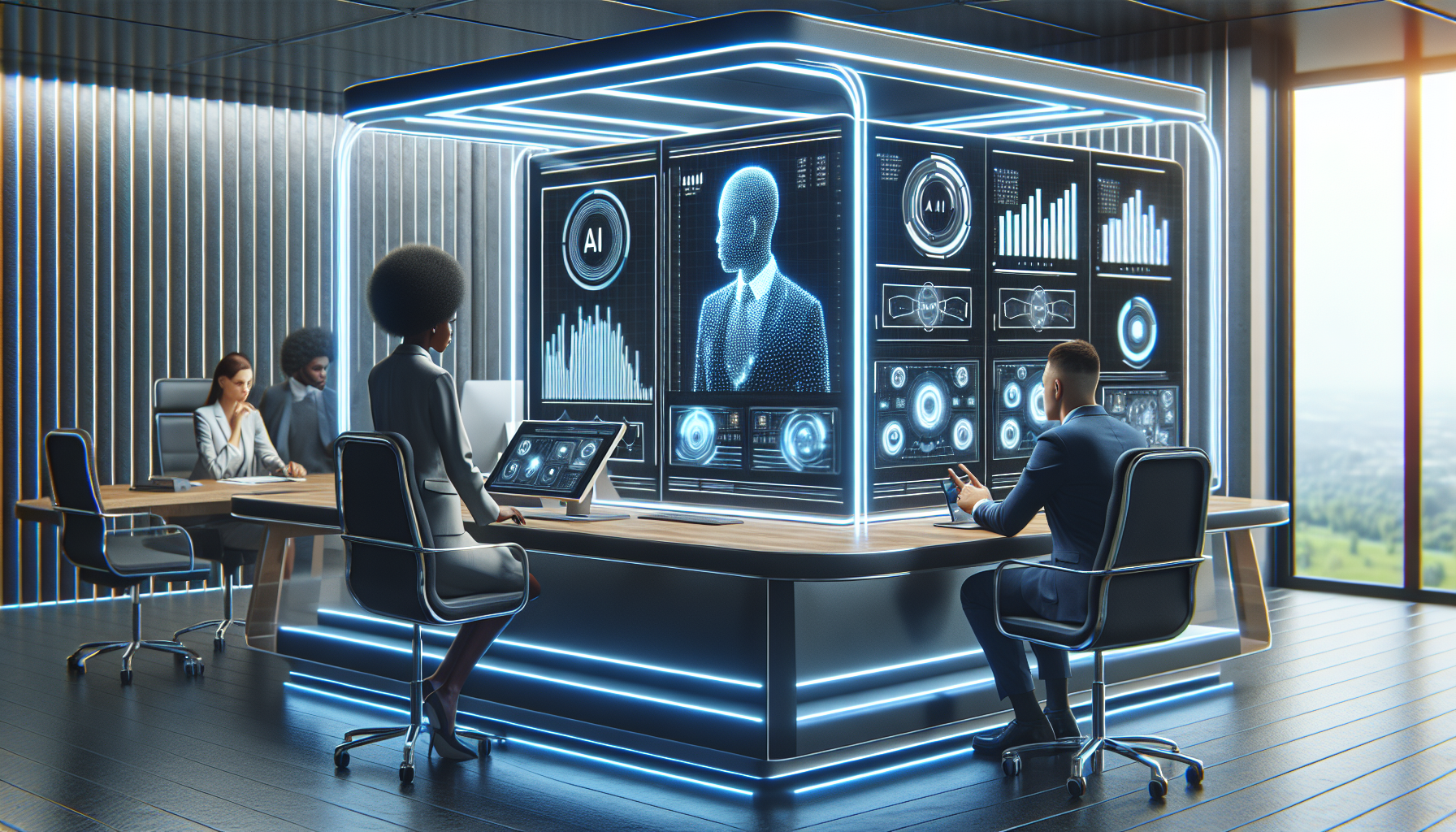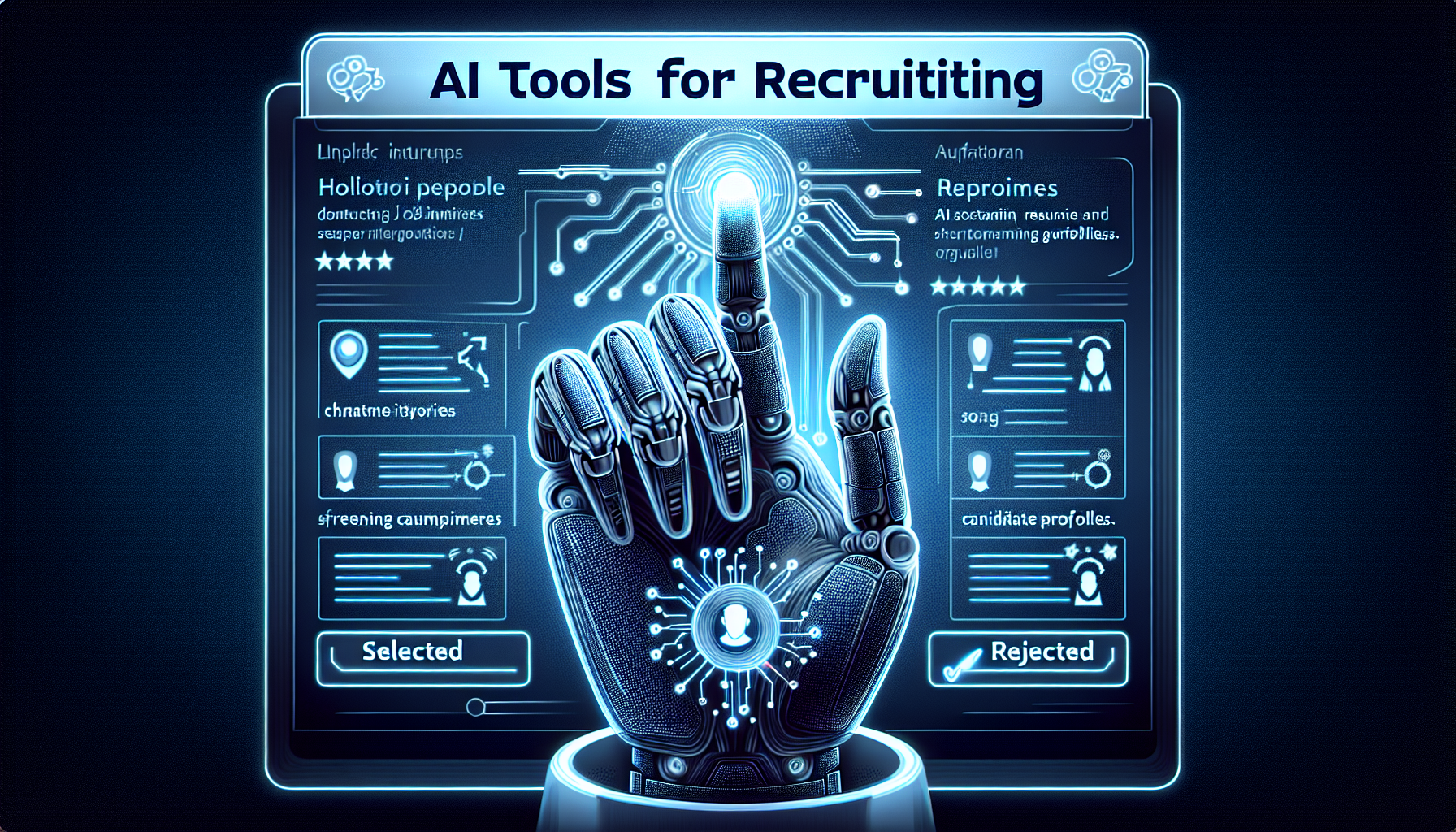Discover Top AI Tools for Gaming in 2021
Hey there, curious gamer! Let’s dive into the amazing world of AI tools that have been spinning the gaming realm on their fingertips this year. It’s hard not to appreciate how these cutting-edge innovations have added another exciting angle to our gaming experiences. So, let’s unbox some of the top AI tools for gaming that have dominated 2021!
The Dynamic Difficulty Adjustment (DDA) tool soared to new heights this year, obliterating traditional difficulty levels. By tailoring the game’s difficulty based on your performance in real-time – talk about personalization, right? It’s like having your gaming coach adjusting your training based on your individual strengths and weaknesses. This AI wonder has transformed gaming into a more fluid and immersive experience than ever before.
In the spotlight next is the famous Google’s DeepMind. This superb machine learning tool has astonished the gaming community in 2021 by mastering complex games without any prior knowledge. It’s like a little kid that has suddenly outrun professional athletes, astounding, right? Gamers around the globe are thrilled to see this show-stopper making their games more challenging and innovative.
AI Dungeon, our third game-changer, actually uses AI to weave together incredibly immersive and unpredictable narratives. Imagine playing a game that molds its storyline as you progress, feels like flipping an ever-changing enchanted book, doesn’t it? This randomness and freshness injected by AI Dungeon has certainly won the hearts of numerous gamers this year.
FAQs
-
1. What makes DDA stand out among AI tools for gaming?
- DDA, or Dynamic Difficulty Adjustment, offers a personalized gaming experience by dynamically adapting the game’s difficulty according to the player’s skill level and performance. Its uniqueness lies in this ability to provide a customized challenge for each player.
-
2. What is the purpose of Google’s DeepMind in gaming?
- Google’s DeepMind uses sophisticated machine learning to master complex games without any pre-existing knowledge. It adds another level of challenge and innovation, making the gaming terrain more exciting.
-
3. How does AI Dungeon change the gaming experience?
- AI Dungeon weaves together immersive and unpredictable narratives using AI. It molds the game’s storyline as you play, ensuring a unique and fresh gaming experience with each turn.
-
4. Are AI tools gradually becoming an integral part of the gaming industry?
- Indeed, AI tools have significantly transformed the gaming landscape by introducing novel gameplay, personalization, and increased immersion. Given their influence and potential, they are unequivocally becoming pivotal in revolutionizing the gaming industry.
-
5. Does the use of AI tools in gaming require professional expertise?
- No necessarily. Many AI gaming tools are designed to be user-friendly and do not require professional expertise. However, developers and hardcore gamers with technical knowledge can potentially make greater use of them.
Understanding AI in Gaming: A Brief Overview
You’ve probably wondered how exactly games like Assassin’s Creed or Call of Duty seem to become more intelligent with every new version, right? Well, the secret ingredient is something we call Artificial Intelligence or AI. It’s not an alien concept but rather a friend that helps in breathing life into our beloved video games.
Think about it. Remember that last boss battle you painstakingly fought in your favorite game, or that non-player character (NPC) who seemed unusually clever? AI is the puppet master behind them. Without AI, the gaming world would be a static, unresponsive void, where everything happens in a fixed, predictable manner. Yeah, and what’s fun about that?
What Role Does AI Play in Gaming?
AI’s role in gaming is multi-faceted. The most prominent is how it makes games more engaging and interesting. It achieves this by increasing the game world’s responsiveness, enhancing NPC’s reactions, and introducing unpredictability into the gameplay.
AI is also key in adapting the game’s difficulty level to the player’s skill. You know how the game feels a bit easier after you’ve spent hours being stuck at the same level? That’s AI working its magic, subtly adapting the difficulty for a smoother gaming experience. It’s like having a friend sitting next to you, nudging the game in the right direction.
FAQs
How does AI in games differ from other types of AI?
In comparison to other types of AI, gaming AI is mainly focused on creating immersive, believable environments and behaviors within the constraints of a game’s utter fictionality.
Does AI improve game graphics?
No, AI doesn’t directly improve game graphics. However, it can affect the overall visual experience by controlling elements like NPC movement, weather patterns, and lighting effects.
What kinds of games use AI?
Almost all types of games, from simple mobile games to complex multiplayer online games, use AI. Any game that requires interaction with the environment or characters typically utilizes AI to some extent.
[aib_post_related url=’/ai-tools-for-accounting/’ title=’Top AI Tools for Accounting: Streamline Your Financial Processes’ relatedtext=’You may also be interested in:’]
Can AI design games by itself?
As of now, AI is not capable of designing a full-fledged game on its own. However, researchers and game developers are working on leveraging AI to automate certain aspects of game design.
Why is AI important in video games?
AI is crucial in giving life to video games. It creates a more engaging, immersive, and unpredictable gaming environment that otherwise would be static and dull.
How Can AI Tools Enhance Your Gaming Experience?
Ever wondered how your gaming experience can reach a whole new level? That’s where AI tools come into play! Think of it: you’re in the middle of a dynamic video game universe where your actions have meaningful, far-reaching impacts or perhaps in a game scenario that adapts to your unique playing style. Sounds pretty exciting, right? This is what AI can do. It can morph, evolve, and learn from your actions, making your games infinitely more immersive and personalized.
Adaptive Gameplay
Ever experienced those moments of predictability, when you can foresee the next move of your opponent? AI has stepped in to tackle this issue. AI bots can learn from your gameplay tactics, becoming a challenging adversary that constantly pushes your boundaries and triggers continuous improvement. From FPS games to chess, AI bots are there, helping you make the unexpected move. They learn your patterns, adapt and evolve, and suddenly your predictable single-player game becomes a unique challenge where victory tastes even sweeter. So, could AI transform you into the next e-sports champion? Who knows; the sky’s the limit!
Immersive Gaming Universe
And what about the game world around you? AI is revolutionizing this aspect too. Imagine exploring dynamic game environments that change over time, NPCs that remember past interactions, and a world that evolves based on the collective decisions of players. Thanks to AI, game environments are becoming more vibrant, more real, and more reactive. Developers are leveraging neural networks and machine learning algorithms to breathe life into game worlds. AI is becoming the Puppetmaster, pulling the strings behind the screen and giving you a unique and truly immersive gaming session.
The Power of Personalized Content
On top of all this, AI can facilitate tailored gaming experiences. Personalization is king in today’s digital age. Users crave experiences catered to their preferences and play styles. With AI, games can collect and analyze data to present challenges and rewards suited to each individual player. So, how cool would it be to have a game that grows with you, changes with you, and gets better as you get better? That’s AI for you!
FAQs
Q1: Does AI make single-player games more difficult?
No. While AI does adapt and learn from your actions to offer more challenge, the goal is not to make games impossibly difficult but to make them more engaging and fun.
Q2: Are there any types of games that benefit more from AI?
All types of games can benefit from the incorporation of AI to some degree. However, RPGs, strategy games, and games with dynamic environments or complex storylines can have particularly enhanced gameplay experiences with AI.
Q3: Can AI make games less predictable?
Yes, this is actually one of the major benefits of AI in gaming. By learning from player actions, AI can create varied experiences that are less predictable and more engaging.
Q4: Does AI replace the need for actual human players?
No, AI doesn’t replace the need for human players but adds a fresh layer of complexity and excitement to the gaming experience. What’s more, AI’s purpose isn’t to overshadow human interaction but to complement it within the game environment.
Q5: Does the use of AI in games compromise player privacy?
As long as game developers uphold privacy standards and use data collected responsibly, the use of AI doesn’t inherently compromise player privacy. Players should always check the game’s privacy policy to understand how their data will be used.
Top 10 AI Tools for Gaming You Should Try Today
Hey there, fellow gamers! Have you ever wondered what’s the secret behind those impressive AI characters in your favorite games? Today, we’re diving into the top 10 AI tools for gaming that you should definitely check out. They’re not only revolutionary, but they’re also shaping the way we play and enjoy games.
We’re kicking off with Google’s DeepMind. Remember AlphaGo, the AI that defeated a world champion at Go, a complex board game? That’s DeepMind for you. Apart from being a maestro at games, it’s rewriting the rules of game development. Next in line is the awe-inspiring OpenAI’s GPT-3, renowned for its capabilities to learn from previous interactions to make games more interesting and dynamic.
Unleashing Creativity with AI
Continuing down the list, the Unity AI Game Engine deserves a mention. It allows even novice developers to develop games with advanced AI techniques. The IBM Watson Assistant is another gem in the gaming industry. With its ability to engage players in natural language conversations, it’s enriching gaming experiences like never before.
Last but not least, gaming studios are using Microsoft Azure’s PlayFab for its multifaceted features ranging from player analytics to live ops management. Definitely a treat for game developers, don’t you agree?
FAQs About AI Tools for Gaming
What exactly is Google’s DeepMind?
Google’s DeepMind is an artificial intelligence tool that can master and comprehend a range of games. It’s best known for AlphaGo, the AI that defeated a world champion in the complex board game Go.
What can OpenAI’s GPT-3 do in gaming?
OpenAI’s GPT-3 uses machine learning to create more dynamic and realistic gaming experiences. It learns from previous player interactions, making every gameplay unique and interesting.
How does the Unity AI Game Engine benefit game development?
The Unity AI Game Engine enables developers, even beginners, to create games with advanced AI techniques. It’s highly effective for sophisticated game characters and scenes creation.
What is the role of IBM Watson Assistant in gaming?
IBM Watson Assistant enriches gaming experiences by engaging players in natural language conversations. It’s like having a real-time strategic advisor while playing.
Why do gaming studios use Microsoft Azure’s PlayFab?
Microsoft Azure’s PlayFab offers multifaceted features for game developers. It includes facets such as player analytics, live ops management, and more, making it a comprehensive tool for gaming studios.
Unleashing the Power of AI in Modern Gaming
The infusion of Artificial Intelligence (AI) in the realm of modern gaming has proven to be a game-changer, pun intended. It’s like pouring fuel on the fire of creativity and birthing a whole new level of interactive experience. Dig into this concept, and it’s undeniable that the landscape of gaming has undergone radical transformation with the arrival of AI. But, what is it about AI that makes it such a pivotal element in contemporary gaming?
How AI Transforms Gaming Dynamics
The beauty of AI lies in its capacity to learn, reason, and self-correct. Think about it, isn’t that what we are looking for in a formidable opponent? Let me put it this way, imagine playing chess with an opponent who gets better with each move, who learns from mistakes, and adapts strategy every time you play. That’s what AI brings to the table.
Consider game mechanics for a second. It used to be that game developers had to write extensive lines of codes to develop a character. With AI, they can simply feed the system with parameters and the character evolves in due course. It’s like having a super-smart apprentice who learns, innovates, and creates a captivating and unpredictable gaming environment.
Tapping into The Power of AI
AI in modern gaming is like the secret sauce in Grandma’s recipe. It makes the dish, or in this context the game, immensely appealing. Ever heard of procedural content generation? It’s a technique where AI helps in creating new levels, terrains and challenges, bringing forth a unique gaming session every time. Who wouldn’t like a game that stays novel and exciting every time you boot up?
FAQs
1. How has AI impacted the gaming industry?
AI has transformed the gaming industry by creating dynamic characters, altering game mechanics, and delivering personalized gaming experiences.
2. What is procedural content generation in gaming?
Procedural content generation is a process where AI creates new levels, challenges, and experiences in a game, making every gaming session unique and exciting.
3. Can AI make a game difficult?
Yes, AI can adjust the difficulty level of a game based on the skills and progress of a player, making the game increasingly challenging and engaging.
4. Is AI only beneficial for game developers?
No, AI benefits both developers and gamers. Developers can create more engaging and sophisticated games, while gamers can enjoy a unique, dynamic, and personalized gaming experience.
5. Can AI predict player behavior in games?
Yes, through machine learning, AI can learn from and predict player behavior, thereby improving game dynamics and enhancing user engagement.
AI Tools for Gaming: Pro’s and Con’s
Exploring the landscape of modern video games, Artificial Intelligence (AI) has emerged as an indispensable tool, creating intriguing experiences and pushing the boundary of what is possible. But like any innovation, there are Pros and Cons associated with AI tools for gaming.
AI in video games unarguably improves gameplay, enriching the gaming milieu with capable strategies and unpredictable challenges. It brings Non-Player Characters (NPCs) to life, equipping them with “intelligence” that allows them to react like real-life players. Ideal for both multiplayer games and single-player quests, these AI-driven characters make the gaming world vibrant and thrilling. Additionally, advanced AI algorithms contribute to impressive visuals and realistic environments, enhancing the overall gaming immersion.
The Downside of AI Tools in Gaming
On the flipside, there are certain cons attached to the use of AI in gaming. Firstly, developing sophisticated AI tools is both resource-intensive and time-consuming, often leading to increased cost for game development. This, in turn, may translate to higher prices for gamers. Additionally, the introduction of AI can sometimes result in an impersonal gaming experience. With NPC’s appearing almost too perfect in reactions, games may lose a touch of unpredictability and human-like flaws, which are typically appreciated by gamers.
Yes, AI tools in gaming are a double-edged sword, offering improved gameplay, yet at times, may diminish the unpredictable and human element of games. Like many balancings acts, the optimum use of AI in video gaming space requires careful consideration of these potential pitfalls.
FAQs:
1. How does AI enhance the gameplay in video games?
AI enhances gameplay by equipping Non-Player Characters (NPCs) with ‘intelligence’ which allows them to react like real-life players, creating vibrant and thrilling gaming experiences.
2. What are the downsides of using AI in gaming?
AI development is resource-intensive and time-consuming, often leading to increased cost of game development. Also, AI can create an impersonal gaming experience, with AI-driven characters appearing almost too perfect.
3. Does AI make video games too predictable?
While AI can lead to enhanced strategic gameplay, it can at times reduce the unpredictability of games by introducing ‘perfect’ NPC reactions.
4. Can the use of AI lead to higher prices for video games?
Yes, as developing sophisticated AI tools is resource-intensive and time-consuming, it can lead to increased costs for game development and hence, higher prices for gamers.
5. How do developers balance the use of AI in video gaming?
The optimum use of AI in video games requires careful consideration of the pros and cons. While AI can enhance gameplay, it’s important to balance this with the need for unpredictability and a human-like touch in games.
The Future of Gaming with AI Tools
Imagine a world where gaming isn’t just about impacting the pixels on a screen, but a domain where the characters are as intelligent and unpredictable as humans. That’s what the AI tools are incubating into the gaming industry. Algorithms that learn from the player’s behavior, adaptive game environments, and characters that grow and evolve – this isn’t a distant dream anymore my friends, it’s happening now.
Moving to the heart of the matter, AI isn’t a new element in the gaming industry. You’ve seen it in the non-player characters or NPCs, right? But, with the recent advances in machine learning and deep learning, the role of AI is moving way beyond. A key aspect of this is procedural content generation; no longer are developers tediously creating every bit of content. AI algorithms are now creating complex and engaging content, dynamically! The future of gaming is truly on an exciting path.
Unlocking the Potential of AI Tools
One question that might pop up in our minds – how much can AI truly influence gaming? Well, here’s the exciting part; AI tools can potentially transmute gaming into an immersive experience that interacts and evolves with the player. Imagine a game that changes its storyline based on your decisions, or opponents who strategize in real time to match your gameplay. Feels straight out of a sci-fi novel, doesn’t it?
FAQ:
1. How does AI impact the gaming industry?
AI has a significant impact on the gaming industry. It has been used traditionally in Non-Player Characters(NPC) and is transforming the industry by enabling dynamic procedural content generation, real-time challenging enemies, and adaptive storylines.
2. Are AI tools used only in computer gaming?
No, AI tools are not exclusive to computer gaming. They are used in various forms of gaming including mobile gaming, VR gaming, AR gaming, and even in board games.
3. What new applications of AI should we expect in future games?
Future applications of AI in gaming could include advanced behavioral algorithms, more dynamic game environments and plots, and usage of AI in game testing and quality assurance.
4. How will AI tools make gaming more immersive?
AI tools can potentially make gaming more immersive by creating intelligent characters that can learn and evolve based on player behaviors and preferences. They can also create dynamic and interactive game environments.
5. Can AI replace human game developers?
While AI can automate some aspects of game development, it is unlikely to replace human developers entirely. The creativity, intuition, and understanding of human emotions that game developers bring to the table are irreplaceable and provide a unique value to the gaming world.
Improving Game Strategies with AI Tools
Gaming has evolved beyond the mere pastime of our youth. With advancements in technology, it’s morphed into a complex domain requiring strategic thinking and forward planning. Are you always on the lookout for ways to get an edge over your opponents? Well, it may surprise you to learn that one of the most groundbreaking tools in the gaming industry today is artificial intelligence (AI). Yes, you read that right. Welcome to the age of improving game strategies with AI tools.
How can AI Tools Upgrade your Gaming strategies?
But you might wonder, how exactly can these AI tools improve your game strategy? Think of AI as your personal gaming coach. It analyses patterns, detects weaknesses, and suggests optimized solutions almost like a seasoned game guru. AI models can study the tactics utilised by pro gamers, scrutinise their manoeuvres and provide recommendations tailored just for you. It’s like having a backstage pass to a world-class performance, with the added bonus of expert insights and guidance.
AI’s Role in Multiplayer/Solo Games
In multiplayer games, AI can enhance the degree of challenge, adaptively scaling the game’s difficulty based on a player’s proficiency level. Similarly, in solo games, AI creates more convincing “non-player characters” through realistic reactions, making the gaming experience richer and more immersive. It’s like stepping into a game that molds itself according to you, understanding and responding to your strengths and weaknesses. Not just following a preset program, but also learning, reacting, and planning ahead.
A World of Intuitive Interactive Gaming
Ultimately, AI tools take your gaming strategy from being passive to proactive, dealing with a variety of scenarios in a more intuitive and interactive manner. It’s like stepping from a black and white world into one full of colour, where the game is no longer just a code or program, but a dynamic, responsive environment that pushes your gaming strategy to its utmost potential.
Frequently Asked Questions
1. Can AI help beginners improve their game strategies?
Yes, AI is a fantastic tool for beginners as it can tailor strategies based on personal proficiency level, recommending initial steps and improvements for gameplay.
2. Does AI only work with certain types of games?
Not at all, AI tools can be utilised across a wide range of game genres – from strategy and puzzle games to action or adventure games.
3. How quickly can I see improvements in my gaming strategies with AI?
As an adaptive tool, AI could show improvements quite quickly, depending on how often you play and how intricately you follow the recommendations.
4. Can AI replace a human opponent in a game?
No, AI is incredibly smart but it can’t replace human unpredictability and ingenuity. Instead, it makes games more challenging by simulating advanced gameplay.
5. Do I need any special software or hardware to implement AI in my games?
Some AI tools require specific programs or increased computing power. It’s best to check the requirements of each tool individually.
Case Studies: Successful Use of AI Tools in Gaming
Have you ever wondered about the magic behind your favorite gaming characters or the smoothness of gameplay? Well, it’s time we lift the curtain to reveal the leading actor in this field: Artificial Intelligence (AI). Let’s crack open a few case studies that illustrate how the successful use of AI tools has redefined the gaming landscape.
The world of gaming experienced an unprecedented revolution when introduced to natural cognitive capabilities of AI. Rockstar Games’ phenomenally successful “Red Dead Redemption II” provides a convincing case. Embedded with sophisticated AI, the game offers a captivating lifelike experience, with characters showing advanced behavioral dynamics. The AI system pulls numerous strings behind the scenes to create genuinely unpredictable and thrilling encounters for the players, making the game a dramatic masterpiece.
The Chess Master: AI in board gaming
But it’s not just action games. Board games, too, are enjoying the mind-blowing expertise of AI. Remember the duel between Chess Grandmaster Garry Kasparov and IBM’s AI, Deep Blue? This thrilling face-off put an indelible stamp on the capacities of AI, proving its potential to strategize and execute game plans with unmatched precision. The AI’s calculating prowess not only took Kasparov by surprise but also added a new dimension to competitive chess.
AI: The game developer’s new best friend
From the developers’ viewpoint too, AI has emerged as an indispensable asset. Making games is no less challenging than playing them. However, games like Ubisoft’s Assassin’s Creed series turned to AI for better navigation and environmental interaction, noticeably enhancing the gaming experience. Surprised? This is just the tip of the iceberg!
FAQs: Unanswered Questions about AI Tools in Gaming
Q1: Are there any notable limitations of using AI in gaming?
While AI promises considerable advancement in gameplay, it also has its drawbacks, including the daunting challenge of coding complex human behavior.
Q2: Can AI completely replace human game developers?
While AI tools can aid in game development, they cannot completely replace human developers, due to their inability to match human creativity and intuition.
Q3: How does AI influence multiplayer gaming?
AI significantly enhances multiplayer gaming by providing advanced matchmaking algorithms and bots for practicing and maintaining fairness.
Q4: Can AI impact game narratives?
Yes, AI can shape dynamic and adaptable game narratives based on player choices and interactions, adding depth to storytelling in games.
Q5: How can AI affect the future of gaming?
AI has the potential to revolutionize gaming by making games more immersive, engrossing, and personalized using techniques like machine learning and predictive analytics.
Getting Started: How to Choose the Best AI Tools for Gaming
So you’re stepping into the exciting world of gaming, eh? Whether you’re a novice dipping your toes in the gaming waters or a seasoned pro, one thing is clear: the right AI tools can take your gaming experience to a whole new level. But how do you choose the best AI tools for gaming? Buckle up! We’re about to delve into this fascinating topic.
Start by pinning down what you want. Sounds basic, right? But you’ll be amazed at how many gamers skip this step. Are you looking for an AI tool that will give you a competitive edge? Or perhaps you want something to fine-tune your game development skills. Knowing what you want will guide you in the process of choosing the right AI tools for gaming.
Understanding the Gaming Scenario
To further narrow down your options, consider the specific gaming scenario where you’ll use the AI tool. Is it for strategic games that require intelligent decision-making? Or are you looking to improve the realistic behaviors of non-player characters in role-playing games? The gaming scenario often dictates the type of AI tool that fits.
The Specific Tool Features
In the realm of AI tools for gaming, the key here is the feature set. Let’s break it down. Some common features in gaming AI tools include pathfinding, which helps characters navigate accurately, or decision-making algorithms that simulate high-level strategic thinking. Look for these functional aspects that are essential for your specific gaming needs.
FAQs
1. Do I need technical knowledge to use gaming AI tools?
While some AI tools for gaming do require a degree of technical understanding, there are plenty designed for those with minimal technical knowledge. Explore the specifications of the tool before deciding.
[aib_post_related url=’/ai-tools-for-research/’ title=’Maximizing Efficiency: Top AI Tools for Streamlined Research in 2022′ relatedtext=’You may also be interested in:’]
2. Can I use the same AI tool for all types of games?
AI tools are often tailored for specific types of games. Understand the game genre and requirements before choosing an AI tool.
3. Are gaming AI tools expensive?
The cost of gaming AI tools can vary greatly, from free offerings to premium ones. Determine your budget and explore accordingly.
4. Can AI tools help improve my gaming skills?
Yes, certain AI tools designed for gameplay analysis can help players improve their gaming skills by providing useful insights and recommendations.
5. Does using AI tools take away the fun from gaming?
[aib_post_related url=’/ai-tools-for-human-resources/’ title=’Unlock the Potential of AI Tools for Human Resources: Maximize Efficiency and Effectiveness’ relatedtext=’You may also be interested in:’]
Not at all. In fact, AI tools can enhance your gaming experience by providing smarter opponents, more realistic behaviors, and other immersive aspects.
Choosing the best AI tools for gaming is a fascinating journey. Armed with the right knowledge, you can make decisions that will significantly enhance your gaming experience. So, happy gaming!

